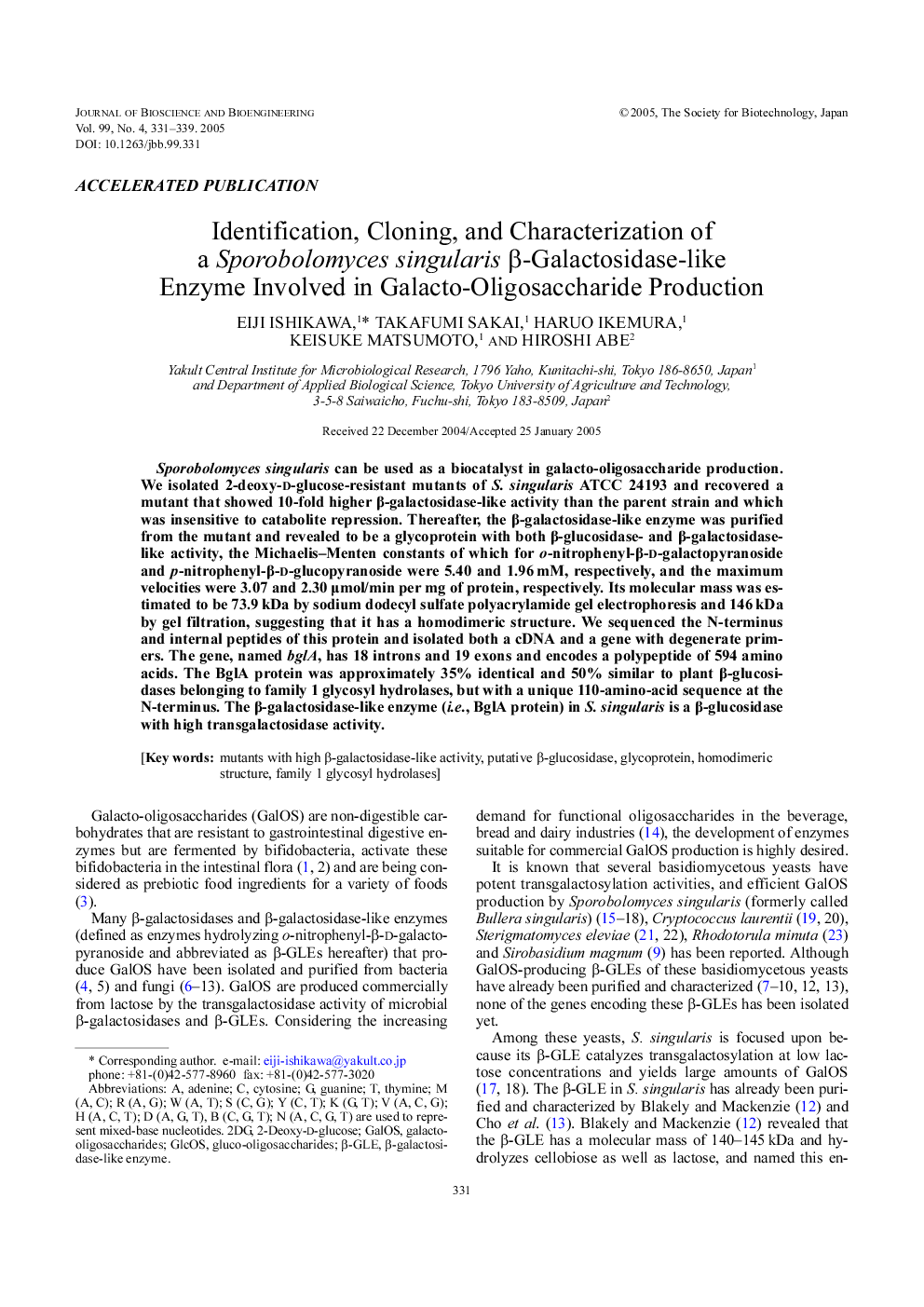| Article ID | Journal | Published Year | Pages | File Type |
|---|---|---|---|---|
| 9603228 | Journal of Bioscience and Bioengineering | 2005 | 9 Pages |
Abstract
Sporobolomyces singularis can be used as a biocatalyst in galacto-oligosaccharide production. We isolated 2-deoxy-D-glucose-resistant mutants of S. singularis ATCC 24193 and recovered a mutant that showed 10-fold higher β-galactosidase-like activity than the parent strain and which was insensitive to catabolite repression. Thereafter, the β-galactosidase-like enzyme was purified from the mutant and revealed to be a glycoprotein with both β-glucosidase- and β-galactosidase-like activity, the Michaelis-Menten constants of which for o-nitrophenyl-β-D-galactopyranoside and p-nitrophenyl-β-D-glucopyranoside were 5.40 and 1.96 mM, respectively, and the maximum velocities were 3.07 and 2.30μmol/min per mg of protein, respectively. Its molecular mass was estimated to be 73.9 kDa by sodium dodecyl sulfate polyacrylamide gel electrophoresis and 146 kDa by gel filtration, suggesting that it has a homodimeric structure. We sequenced the N-terminus and internal peptides of this protein and isolated both a cDNA and a gene with degenerate primers. The gene, named bglA, has 18 introns and 19 exons and encodes a polypeptide of 594 amino acids. The BglA protein was approximately 35% identical and 50% similar to plant β-glucosidases belonging to family 1 glycosyl hydrolases, but with a unique 110-amino-acid sequence at the N-terminus. The β-galactosidase-like enzyme (i.e., BglA protein) in S. singularis is a β-glucosidase with high transgalactosidase activity.
Keywords
Related Topics
Physical Sciences and Engineering
Chemical Engineering
Bioengineering
Authors
Eiji Ishikawa, Takafumi Sakai, Haruo Ikemura, Keisuke Matsumoto, Hiroshi Abe,
